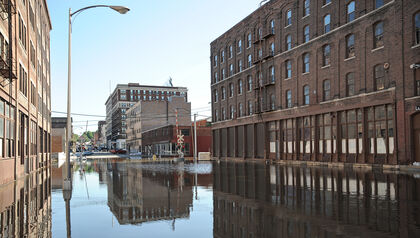Contibutor:
Andre Kohn | Senior Associate, Advisory
The Inflation Reduction Act of 2022 (IRA) significantly increased several highly advantageous clean energy tax credits and incentives. Originally, the Energy Policy Act of 2005 created the Section 179D Energy Efficient Commercial Building Deduction (Section 179D) tax incentive, which is highly advantageous for architects, engineers, and contractors responsible for design components of government-owned, energy-efficient buildings (Notice 2008-40).
Section 179D is a tax deduction available for commercial building owners, architects, engineers and other designers. In order to qualify, the building must reduce energy consumption by 25% or more as compared to an American Society of Heating, Refrigerating and Air-Conditioning Engineers (ASHRAE) 90.1-2007 reference building. The deduction is permanent, and there is a bonus deduction of five times the base amount if the project meets certain requirements. The IRA now also extends the deduction to designers of commercial buildings owned by tax-exempt organizations, including not-for-profit organizations, churches and other religious organizations, tribal organizations, and not-for-profit schools and universities.
Section 179D Deduction Enhancements
- Increased deduction amount: Increased the maximum deduction amount from $1.88 to $5.00+ per square foot of buildings when placed in service in 2023 or later.
- Expanded building eligibility: Not-for-profit, private schools and other tax-exempt entities may now allocate Section 179D deductions to designers.
- Reset of deduction: Section 179D can now be taken every three years for building owners and every four years for designers so long as relevant additions and/or renovations have been made to the building.
How Can A&E Firms Benefit From a Section 179D Deduction?
A growing number of leading A&E firms are taking advantage of the deduction to reduce their tax burden and promote sustainability. Here are some of the benefits of Section 179D for A&E firms:
- Increased revenue: Section 179D can increase revenue for A&E firms by making them more competitive in the marketplace. By designing energy-efficient buildings that qualify for the incentive, A&E firms can attract more clients and win more business, leading to increased revenue and profitability.
- Cost savings for clients: Designing energy-efficient buildings can also provide cost savings for clients. Energy-efficient buildings require less energy to operate, which can result in lower utility bills and operational costs. This can make these buildings more attractive to clients and can lead to increased demand for A&E firms that specialize in energy-efficient design.
- Improved environmental impact: Designing energy-efficient buildings can also positively impact the environment. Energy-efficient buildings emit fewer greenhouse gases, use less energy, and can reduce the built environment’s carbon footprint. By designing energy-efficient buildings, A&E firms can contribute to a more sustainable future.
- Increased competitiveness: By taking advantage of the Section 179D tax incentive, A&E firms can make themselves more competitive in the marketplace. This can help them differentiate themselves from other firms and attract more clients. Additionally, designing energy-efficient buildings can help A&E firms stay ahead of regulatory requirements and market trends.
- Tax savings: The Section 179D tax incentive provides A&E firms with significant tax savings. The incentive allows firms to deduct $5.00+ per square foot of energy-efficient commercial building property. This can result in substantial tax savings for A&E firms that design energy-efficient buildings.
The Section 179D tax incentive provides significant benefits for A&E firms that design energy-efficient buildings. These benefits include increased revenue, cost savings for clients, improved environmental impact, increased competitiveness, and tax savings. By taking advantage of this incentive, A&E firms can position themselves for long-term success in a rapidly changing business landscape.
Cherry Bekaert Is Here To Help You Claim Your 179D Deduction
If you have any questions regarding Section 179D and the expansion of the deduction included in the Inflation Reduction Act of 2022, Cherry Bekaert’s Tax Credits & Incentives Advisory and Professional Services industry teams are available to discuss your situation with you.
Cherry Bekaert’s Professional Services industry team is comprised of accounting and tax advisors, business strategists, technologists, and analysts with extensive A&E firm industry experience and keen business acumen. Our team of advisors continues to share innovative ideas, industry trends, regulatory compliance and best practices to guide A&E firms forward.
Related Insights
- Podcast: Form 7205: What A&E Firms Need To Know To Claim the Section 179D Tax Deduction
- Article: New IRS Form 7205 for Returns Requiring Section 179D Documentation
- Article: 179D Energy Efficient Commercial Building Deduction Now in Effect
- Podcast: How Can A&E Firms Take Advantage of New Tax Credits in the Inflation Reduction Act?
- Article: Inflation Reduction Act Nearly Triples Section 179D Tax Incentives





